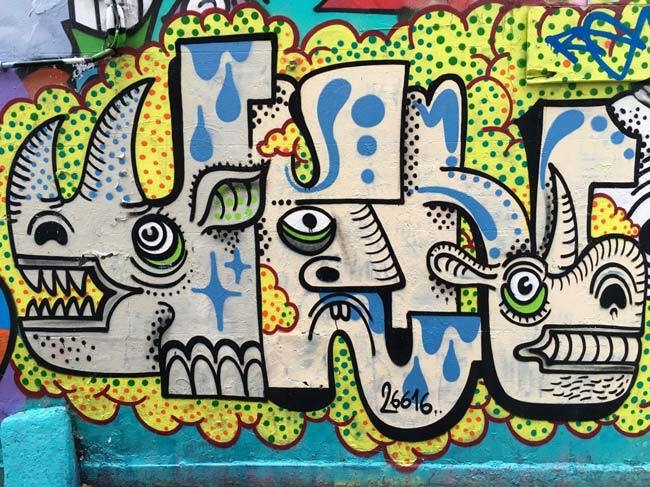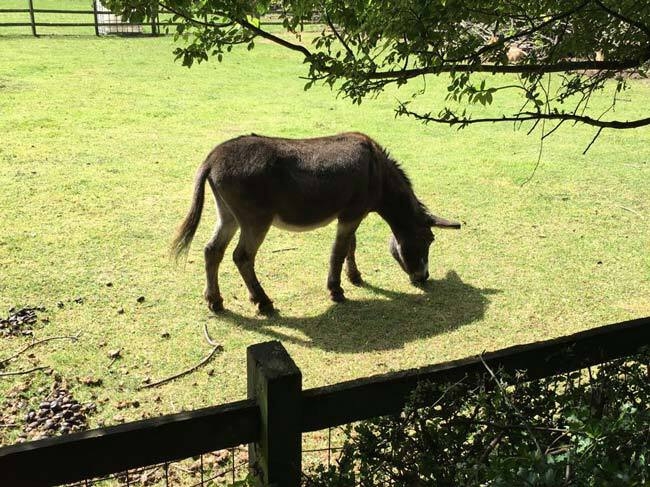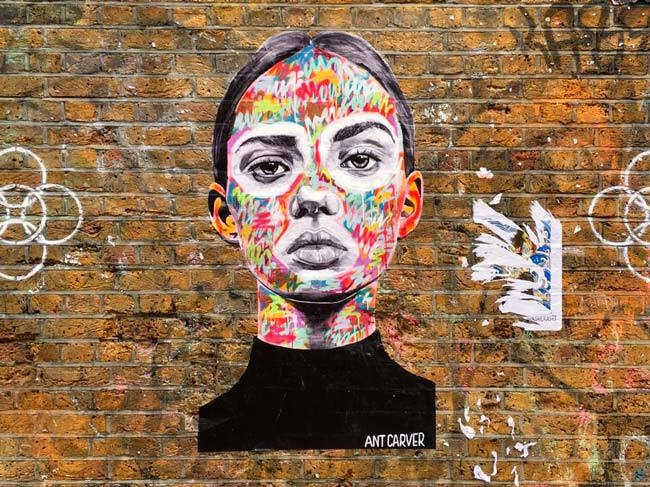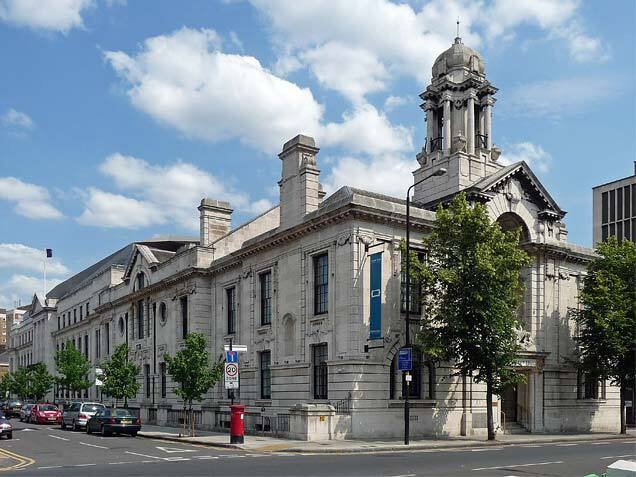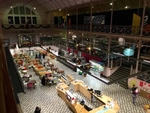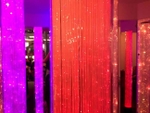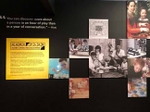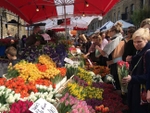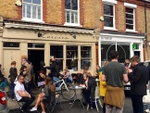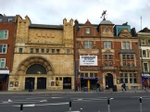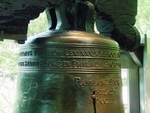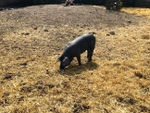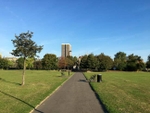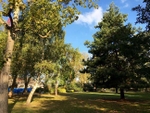1. Brick Lane
East London's best Indian curries are to be found on Brick Lane, which is also known for its trendy nightlife.
Brick Lane is located a stone’s throw to the east of the City of London and on the edge of Spitalfields. This is the heart of London’s Bengali community, sometimes known as Banglatown, and is famous for its colourful, inexpensive and high quality curry houses.
One word of advice: shop around before selecting an eatery, and feel free to barter with the ‘waiters’ trying to usher you into their establishment (perhaps by demanding a free starter or beer).
After your meal, why not have a drink in one of the area’s trendy bars (such as the Vibe Bar in the Old Truman Brewery Centre) or a dance in one of the surrounding nightclubs (such as the Rhythm Factory and Vibe Bar).
Brick Lane's other attractions include a Sunday market, with traders principally selling fruit, vegetables and bric-a-brac.
It is also famous as being the setting for Monica Ali’s 2003 book Brick Lane, and as the place where Emma Elizabeth Smith, a 45 year-old prostitute, became the first of Jack the Ripper’s victims on 3 April 1888.
The Truman Brewery hosts regular exhibitions and events. Past displays include US artist Nathan Sawaya's lego brick sculptures. 2016 offers a number of other events, including the London Coffee Festival in early April and the Other Art Fair and Attia Rashid Exhibition in October.
Brick Lane is East London's best culinary attraction.
£$€¥ Expect to pay £15 per person for an Indian meal (without alcohol).
2. The Museum of Childhood
The Museum of Childhood, a branch of the Victoria & Albert Museum, displays thousands of objects related to childhood, principally dating from the 1600s to the present day.
The Museum was opened by the Prince and Princess of Wales—later King Edward VII and Queen Alexandra—in 1872, and is housed in a red-brick building with a striking internal iron structure.
Attracting over 400,000 visitors annually, the Museum of Childhood is arranged into 15 collections. They include:
- construction toys (displaying lego, meccano and helta-skelta structures);
- clothing (with 6,000 garments, ranging from 18th century bathing costumes and highland suits to 21st century fashion wear);
- dolls (including an early wooden paddle doll dating from 1,300BC, and more modern Barbie, Daisy and Cabbage Patch dolls);
- dolls’ houses (dating back to the 1673 Nuremberg House and including an 1887 dolls house used by Queen Mary and the Sarah Raphael Childhood Cube—previously displayed at the Millennium Dome);
- games (such as chess, backgammon, dominoes, Happy Families and Subbuteo);
- mechanical toys (think yo-yos and slinkys);
- teddy bears and soft toys (from famous manufacturers such as Chad Valley and Chiltern, to famous characters such as Paddington, Winnie-the-Pooh and SuperTed);
- toy figures (such as Action Man, Star Wars, Transformers, Power Rangers, Masters of the Universe and Buzz Lightyear); and
- vehicles (like Scalextric, a Corgi model of James Bond’s Aston Martin and a Hornby model of the Hogwarts Express).
The Museum of Childhood is an attraction for children and reminiscing big kids alike: there are lots of interactive galleries (such as a large working model railway) and hands-on things to do (playing with lego or rocking horses etc).
Hot and cold food is served by the Benugo Café, at the centre of the Museum’s Marble Floor.
The Museum's current temporary exhibition is called Game Plan: Board Games Rediscovered. It enables you to remember the thrill and frustration of playing well-known board games such as Monopoly and Cluedo, as well as looking at popular board games from years gone by. The exhibition runs until 23 April 2017.
One of East London's best family days out.
where? The Museum of Childhood, Cambridge Heath Road, East London E2 9PA. Closest tube: Bethnal Green (Central line).
when? 10am to 5.45pm, daily. Closed 24-26 Dec and 1 Jan.
£$€¥ Free.
3. Columbia Road Flower Market
Columbia Road offers a world-famous flower market and a range of high-end boutique shops.
Found in the heart of London’s East End, with Shoreditch to the west and Bethnal Green to the east, Columbia Road was developed during the 1860s, with a food market established later that decade by philanthropist Angela Burdett-Coutts (also responsible for the Burdett-Coutts Drinking Fountain in nearby Victoria Park).
Today, Columbia Road has a worldwide reputation as a flower market, with plants ranging from freshly cut flowers and shrubs to bonsai, banana and lemon trees, roses, palms, lilies and orchids.
The 40 or so stalls are manned by market traders such as George Gladwell, who has been trading at the market since 1949, and whose ‘patter’ only adds to the entertainment.
Columbia Road is unique in another respect: it is home to over 60 independent shops selling wares such as antiques (Ben Southgate specialises in furniture from between 1900 and 1950), food (Campania Gastronomia is an Italian delicatessen and café), arts and crafts (the Columbia Road Gallery is well worth a visit), and clothes (Glitterati stocks vintage items).
The market also offers a great vibe, the air heavy with flower and coffee aroma and, more often than not, the sounds of local buskers.
Turn up early in the morning for the pick of the flowers and a wide selection of breakfasts, or at about 2pm to get the best bargains.
A must-see East End attraction!
where? Columbia Road, East London E2 7RG. Closest tubes: Old Street (Northern line); Bethnal Green (Central line).
when? 8am to about 3pm, every Sunday.
£$€¥ Free.
4. Whitechapel Gallery
Founded in 1901 and now attracting about half a million visitors a year, the Whitechapel Gallery is best known for its contemporary art exhibitions.
Over the years the Gallery has exhibited Picasso’s Guernica, as well as works by Jackson Pollock, Gilbert & George and Lucian Freud.
The Gallery was reopened in 2009 after a substantial expansion project, with current and forthcoming exhibitions including by Harun Farocki, Heather Phillipson and Rachel Maclean and Rohini Devasher.
As well as gallery space, the beautiful interior contains archives, a dining room and a bookshop.
where? 77-82 Whitechapel High St, London E1 7QX. Closest tube: Aldgate East (found directly underneath the Gallery).
when? Tuesday to Sunday, 11am to 6pm. Late opening until 9pm on Thursdays.
£$€¥ Free.
5. The Whitechapel Bell Foundry
Established in 1570, during the reign of Queen Elizabeth I, the Whitechapel Bell Foundry is the oldest remaining manufacturing company in the country
As its name suggests, it manufactures bells and their fittings. Over the years it has produced Pennsylvania’s Liberty Bell, the Great Bell of Montreal and Big Ben (the 13.5 tonne bell found in Parliament's Elizabeth Tower).
The Foundry has a small museum which is open during weekdays, and offers 90-minute tours every fortnight which explain the process of bell-making.
East London's best small attraction.
where? 32/34 Whitechapel Road, London E1 1DY. Closest tubes: Aldgate East and Whitechapel.
when? Tours are run approximately once a fortnight. Book in advance.
£$€¥ Tours cost £15.
6. Hackney City Farm
Found at the southern end of Haggerston Park, Hackney City Farm is a wonderful attraction for children.
The Farm is clustered around a central paved area which is chock-full of wandering chickens, geese, ducks and other birds. Visitors are free to walk around with the birds (but are advised to wash their hands thoroughly before leaving). In the surrounding pens are found pigs, sheep, donkeys and a selection of small fluffy animals including rabbits, gerbils and guineapigs.
Move on to the Farm's outdoor enclosures, which are home to farmyard animals such as pigs, sheep, goats and donkeys. The animals are well cared for and the Farm offers plenty of opportunities to take part in feeding time.
Found less than a mile from the city of London, this 1.3 acre site also offers a variety of community activities such as basket weaving and gardening sessions.
You should take time to visit its Italian cafe, Frizzante, which serves great coffee, snacks and lunches and has definite Bohemian vibe.
where? 1a Goldsmiths Row, London E2 8QA. Closest tube: Bethnal Green (Central line). Closest rail station: Hoxton (London Overground).
when? Tuesday to Sunday, 10 am to 4.30 pm
£$€¥ Free.
7. Bethnal Green Town House Hotel
Opened in 2010, the art deco Bethnal Green Town Hall Hotel adds a touch of chic to this often gritty area.
The original Bethnal Green Town Hall, built in classic Edwardian style, was opened in 1910. It was extended and updated significantly in the 1930s, with art deco features including an Australian walnut council chamber, a mahogony-panelled mayoral office, and a green and white marble staircase.
Over the years the Town Hall has been used for numerous fashion shoots and as a location for films such as Atonement, Snatch, and Lock, Stock and Two Smoking Barrels.
The hotel has 98 rooms, many of which have en-suite cooking facilities. Other amenities include a 15-metre lap-pool and modern gym.
The Town Hall is also well-known for its two restaurants.
The 30-cover Corner Room is the hotel's casual restaurant: food is served in a light and airy restaurant, with each dish featuring produce sourced from the UK.
For more formal occasions, the Town Hall's Typing Room is the place to go. Head Chef Lee Westcott uses local and seasonal British produce in dishes such as a starter of Isle of Wight tomatoes, chamomile, ricotta & cobnuts and a main course of John Dory, courgette, redcurrants & dulse.
where? Patriot Square, London E2 9NF. Closest tube: Bethnal Green.
£$€¥ Five and seven course tasting menus at the Typing Room cost £65 and £82 respectively. The Corner Room offers two course lunches from £18. Rooms at the hotel start at £170 per night.
8. Haggerston Park and other green spaces
Though they pale by comparison with East London's Victoria Park, Bethnal Green and Whitechapel still have a number of pretty green spaces.
The 15-acre Haggerston Park is the area's largest open space. Its attractions include a small nature reserve, a children's playground and a number of tennis courts and astroturf football pitches. The south end of Haggerston now houses the Hackney City Farm.
Two more pretty public spaces are found around Bethnal Green underground station.
Museum Gardens are located between the station and the Museum of Childhood and offer mature trees, well-tended lawns and flower beds which contain a number of mature palms.
To the south of the station is found Bethnal Green Gardens, a larger space with formal gardens, a large paved basketball area, a small children's playground and four tennis courts.
Bethnal Green Gardens is also home to a monument to the 173 people who lost their lives in a stampede of people trying to get into an nearby air raid shelter. Panic spread when new anti-aircraft rockets were fired for the first time, with those seeking shelter thinking that German bombs were landing around them. The incident, which took place in March 1943, was the worst civilian disaster of the Second World War.
